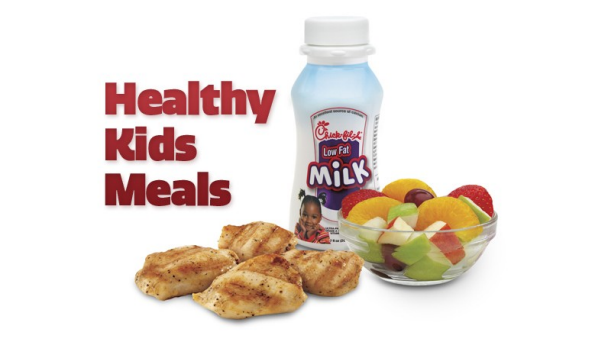In a recent article from QSR Magazine they give us their predictions for the top food trends in 2013. The following 10 trends, according to various consultants, chefs, and operators, seem most likely to impact quick-service and fast-casual restaurants this year. (Source)
1. Going local
Consumers are increasingly seeing “local” as a positive attribute. Locally grown or sourced ingredients fill three of the top 10 spots in the National Restaurant Association’s (NRA) annual “What’s Hot” culinary forecast, which is a survey of more than 1,800 professional chefs who are members of the American Culinary Federation.
Joy Dubost, a registered dietician and director of nutrition and healthy living for the NRA says local sourcing is a “macro trend that will maintain its momentum” this year.
Some regional and small limited-service operators, including Vancouver, Washington–based Burgerville and Los Angeles salad chain Tender Greens, are entrenched in local sourcing. But going local often means more than buying produce from farms in the area. Dubost says a national chain might consider the whole U.S. as local.
“You can take local out and usefresh or made from scratch,” says David Kincheloe, president of National Restaurant Consultants in Golden, Colorado, which also lists local sourcing as a top trend for 2013. “People believe these items are higher quality.”
“We don’t have a formal definition [for local], so it can be open to any interpretation,” Dubost says. Consumers “equate locally sourced, organic, fresh, and natural as healthy.”
Playing with these buzzwords can help boost items like Wendy’s Berry Almond Chicken Salad, a salad only offered in the summer and a product that Wendy’s promotes heavily with the term fresh.
2. Healthy kids’ meals
Healthful and creative kids’ meals will continue to make an impression on the quick-service industry.
The industry “wrote the book” on understanding kids and kids’ meals, says Sharon Olson, executive director of the Culinary Visions panel, which surveyed 3,000 consumers and interviewed dozens of food experts to decide top trends. “They are leaders in knowing what appeals to kids and their parents.”
As such, operators are now going to great lengths to improve the nutritional profile of kids’ meals. The NRA’s Kids LiveWell initiative, which helps eateries spotlight better-for-you menu choices for children, has grown in 18 months to encompass 130 restaurant brands—from Arby’s to zpizza—representing 30,000 locations nationwide.
Dubost says restaurants can improve the health quality of kids’ meals by taking steps like grilling instead of frying, cutting calories and fat.
These efforts aren’t just satisfying parents; kids are also becoming more comfortable with healthier foods.
“There are flavors coming in kids’ menus that bridge what they are having at home or as snacks at day care,” says Kazia Jankowski, associate culinary director at Sterling-Rice Group, a Boulder, Colorado, strategic agency.
Kids’ menus are also getting more innovative, with “Asian food, like dumplings or stir fry; hummus; yogurt; sweet potato fries—things that aren’t far away from a kid’s frame of reference and won’t cause them to say ‘Ugh,’ if the food is healthier,” Jankowski says.
3. Economic struggles
Restaurants may face some tough economic headwinds this year.
“It is going to be a challenging time,” says Bonnie Riggs, restaurant industry analyst for market research firm NPD Group, in her trends report “Looking Ahead to 2013 and Beyond.”
Although quick-service restaurants—particularly fast casuals—continued their slow climb out of the depths of the recession, “any growth in 2013 will come from stealing share,” Riggs says.
The NRA is more optimistic, projecting a 3.8 percent increase in restaurant sales over 2012, to $660 billion. That would be the fourth consecutive year of sales growth for the industry. The quick-service sector’s sales should jump 4.9 percent to $188.1 billion, according to the NRA.
Nonetheless, “disposable income … will be tight through the first half of the year,” Kincheloe says. “Beef prices and beef inflation are not [receding] anytime soon. It will impact rising prices, which puts more heat on disposable income.”
Operators will have to do additional menu engineering to overcome any economic barriers, Riggs says.
“Food inflation is going to hit after the first of the year, when [restaurants’ food] contracts run out, but you can’t pass along all the increases,” she says. “You have to be more selective and maybe add more things to the menu with higher profit margins.”
Chicken, for example, will likely have an increased presence on menus, the experts note, because of its projected price stability.
4. Snacks as a meal
A wide range of influences—around-the-clock eating, customer demand for flexible portions and prices, the food-truck and street-food craze, and operators’ need to move beyond price cutting on core menu items, to name a few—will keep snacking a hot trend this year.
“A lot of people are not eating their meals at traditional meal times,” says Rita Negrete, senior editor at Chicago research and consulting firm Technomic Inc. “People also want something small to eat when they sit around with their friends, and they may not have a lot of money to spend.”
While full-service restaurants are looking for more small plates to fit the bill, quick serves are developing more bite-size items, like McDonald’s Spicy Chicken McBites LTO, KFC’s Chicken Little sandwiches, and Sonic’s Cheesecake Bites.
Snacking has generally been defined as eating between meals. “But now, the way snacking is influencing the industry is with little flavors and little bites,” Jankowski says. “We expect to see menus that allow you to do more customization.”

